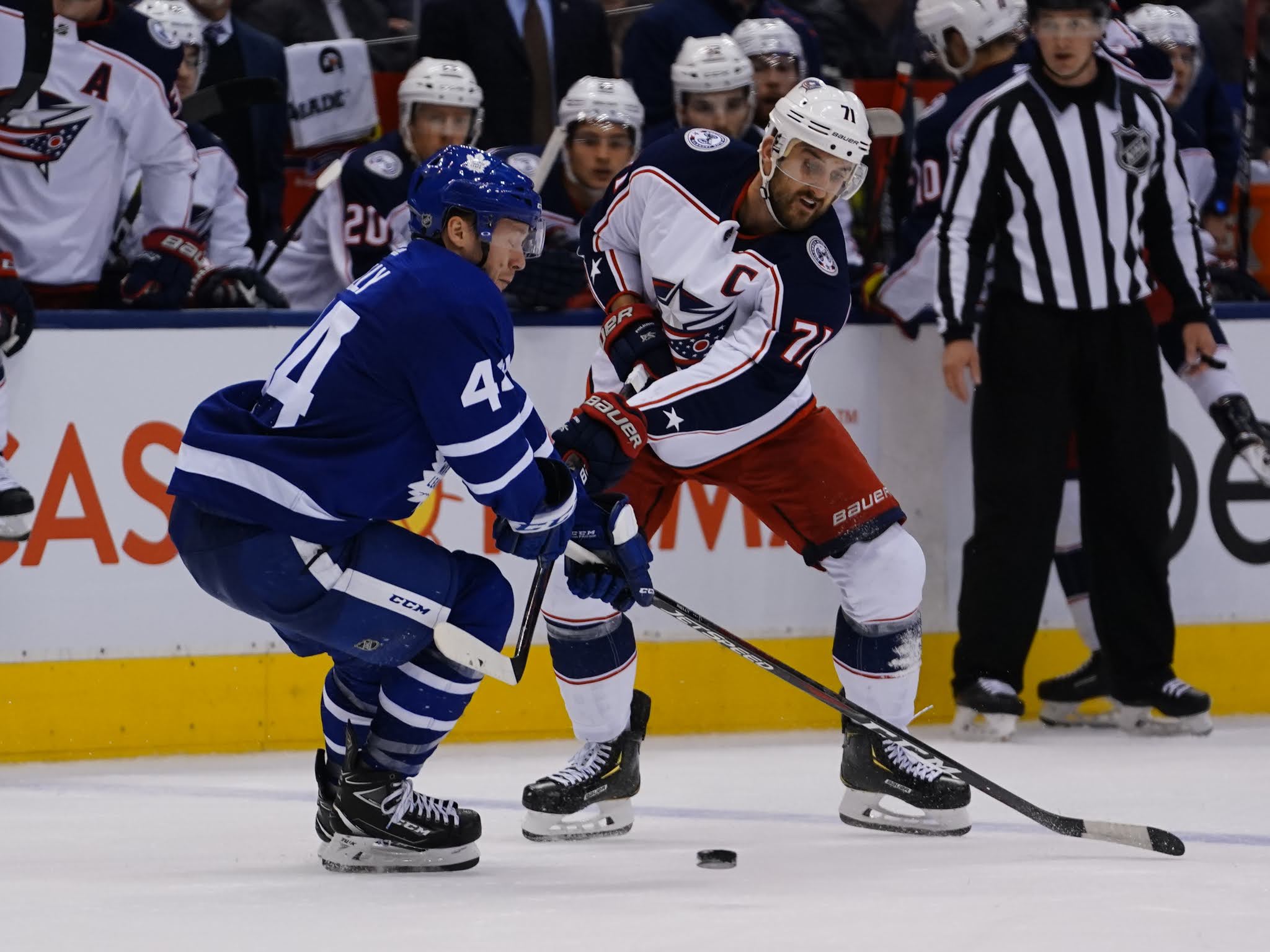The final tally is now known on the Taylor Hall acquisition cost: The Boston Bruins have acquired the talented but struggling winger, alongside Curtis Lazar, in exchange for a second-round pick and 24-year-old depth forward Anders Bjork.
Especially considering the 50% salary retention, there is no doubting this package is a pennies-on-the-dollar return for the Sabres, reflective of just how bad a bad year got in Buffalo and its corrosive effect on player value.
[There is a lot at play here in regards to the Covid-impacted league economics, the buyer’s market, Hall’s reputation (fair or not), the No-Movement Clause, and so on. But the fact that the Leafs once fetched a similar package for Daniel Winnik amid their 30th-place finish back in 2015-16 speaks to the stark difference in how a well-planned, managed and coached “tank” year can play out (vis a vis asset management) compared to the situation of a team with competitive aspirations that has its season go completely and totally awry. It really kills an organization to be completely non-competitive like the Buffalo Sabres were on too many nights this season.]
For Boston, this is a fairly low-risk gamble aimed at revitalizing Hall’s offensive upside as soon as possible on a Bruins team that needs the top-six help. In Toronto, Leafs GM Kyle Dubas, who acquired 33-year-old forward Nick Foligno on Sunday for a heftier package of draft picks (a first and two fourths, with a Marlies option also added in the deal in Stefan Noesen), was never said to be seriously involved in these Hall sweepstakes — not anything more than a little tire kicking, if that.
Did Dubas make the right choice?
First thing’s first: The cap-strapped Leafs almost certainly would have had to pay a little more than Boston did for Taylor Hall given the need for a double-retention accommodation involving a third-party team. 50% retention takes Hall down to $4 million AAV (prorated), an additional 50% retention by a third-party broker gets him down to $2 million AAV (prorated), and the Leafs are picking up just $1.35 million AAV (prorated) of Foligno’s contract.
There is a bigger-picture view that needs to be taken here: The Leafs added Foligno and subsequently shored up their goaltending depth chart with added (credible) insurance in the form of David Rittich for just $600k more than the maximum-retention scenario on Hall — who, again, would’ve cost Toronto a little more than the equivalent of a second-round pick and Bjork.
As hockey fans and pundits, we compare value across deals at this time of year and draw conclusions on that basis — and that’s totally fair — but we often don’t ask ourselves about the ripple effect of accommodating a major addition into the existing room and roster, especially for great teams that are humming along as well as the Leafs are. The bargain-bin nature of the Hall package doesn’t change this notion one iota: It is an entirely different type of challenge — potentially a team dynamic-altering one — trying to rehabilitate Hall’s game with prime offensive opportunities in the top six on a Leafs team that is totally rolling at the moment.
It’s a proposition I can’t blame the Leafs for passing on.
Nick Foligno can slot in just about anywhere in the Leafs’ top nine and it doesn’t matter all that much if he scores half a point per game (or a little less) provided he’s also giving Keefe options on the PK, adds to the strength of the leadership group in a dressing room that appears to have a much-improved culture around it this season, can be trusted in high-leverage situations defensively, and brings an element of nastiness to the team’s lineup. Hall is certainly a better player than he’s being credited for at the moment, but if he isn’t producing, there is a legitimate reason to question if any of the rest of those boxes would be checked.
If you’ve been like every other Leafs fan this season wishing Zach Hyman could be cloned and placed on multiple forward lines, Nick Foligno gives them a little-past-his-prime version of that kind of player. The Leafs can use him to either fill out a hard-to-play against checking third line (e.g. with Mikheyev and Engvall — he gives this unit a better faceoff option than Engvall, as a side note), or to supplement Tavares and Nylander (see: how good the Tavares line was on Saturday with Hyman there, just as it has been in the past).
Even with Alex Galchenyuk on his wing playing a fairly committed game on the forecheck and cycle, it has helped to bring the best out of Tavares of late. Foligno appears to be a good stylistic fit for a centerman (Tavares) who thrives playing that style of cycle game down low and is excellent at finding/burying pucks in traffic at the net front amid the chaos a Hyman or Foligno can create there.
Foligno gives the Leafs a wing option outside of Hyman that doesn’t need the puck on his stick and plays a very direct, always-at-the-net kind of game in the offensive zone, in addition to his demonstrated positive defensive impacts in tough usage and deployment. Even if Foligno doesn’t fit in perfectly next to Tavares or anywhere in the team’s top six, he really doesn’t need to in order to make the Leafs harder to play against and ultimately help them win games.
It appears to me that Kyle Dubas has a really solid understanding this season of how to supplement a team with high-octane forward talent with a diverse complementary cast that gives Keefe all of the options he needs to navigate a long playoff run. Colorado is in a similar position to the Leafs at the moment in the West Division; they also didn’t acquire Hall despite the cheap going rate, and they were heavily in the mix on Foligno for the same reasons the Leafs were: He’s a versatile option that brings a number of elements that can help supplement a team with multiple superstar forwards and a strong top six, one that needs to be able to win a bunch of different ways if it’s to achieve 16 victories over four different opponents at playoff time.
As @APetrielli points out, Dubas added size/grit/checking/leadership via affordable signings & trades to put the team over the top — didn't sign it to overpriced contracts, didn't draft it too heavily, didn't sell farm for it, but mixed it in as needed. This is how you do it. https://t.co/FskzxyYZNz
— Alec Brownscombe (@MapleLeafsHS) April 12, 2021

































